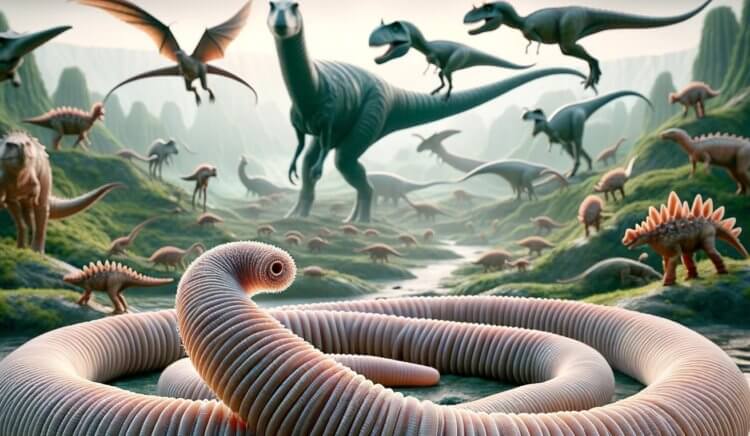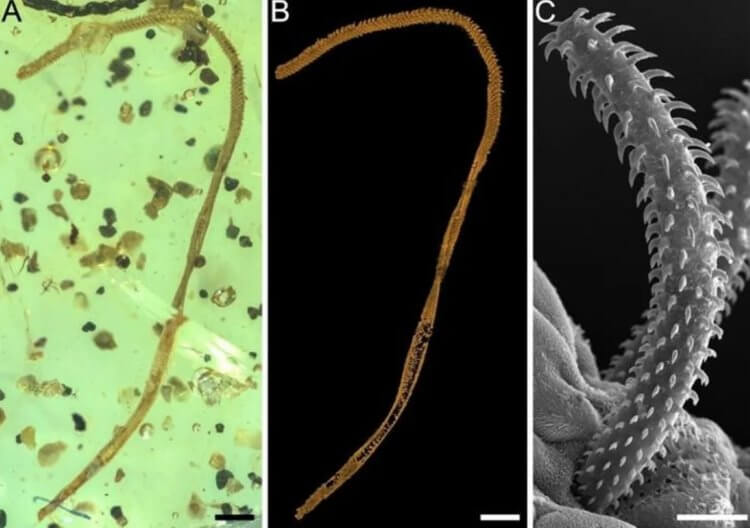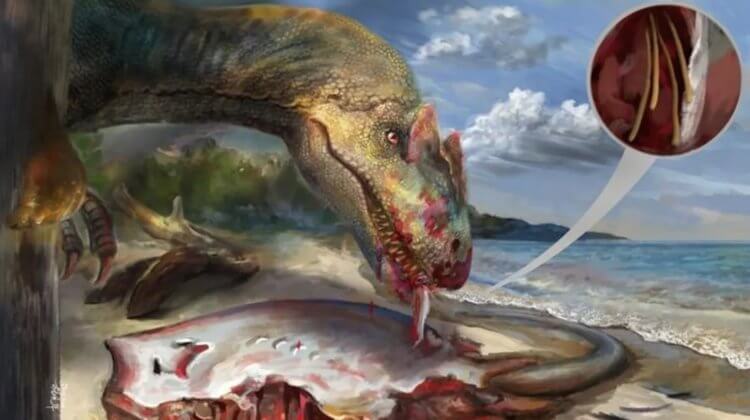Today, science knows about the existence of 3,500 species of tapeworms. This is the name given to flatworms that have a long and flat body, similar to a ribbon, which is why they got their name. Their main life goal is to penetrate the intestines of animals and people in order to stick to its walls and brazenly steal nutrients. When infected with tapeworms, many organisms experience problems with appetite, weight loss, and abdominal pain. Recently, scientists have found evidence that diseases caused by tapeworms have existed for several million years – even dinosaurs were infected with them. They probably also suffered from stomach pain and other health problems as a result.

Evolution of parasitic worms
Evidence that tapeworms caused suffering even in such ancient creatures as dinosaurs was shared by the authors of the scientific publication IFL Science. According to them, until now scientists have not been able to find a single trace of their existence millions of years ago. Only once did paleontologists find evidence of their eggs in shark feces from thePermian periodBut having only one such evidence left scientists unable to say with certainty that tapeworms have been infecting animals since prehistoric times.
The Permian Periodis a part of Earth's history that dates back 298 million years. ago and ended about 252 million years ago. At that time, there was only one continent on the planet – Pangea, which was inhabited by the ancestors of dinosaurs.

Scientists have reason to believe that parasitic worms were infecting sharks long before dinosaurs appeared. Image: DALLE-3 neural network
Scientists have been unable to find tapeworm fossils for two reasons. Firstly, their bodies consist exclusively of soft tissues, which decompose as quickly as possible in the natural environment. Secondly, they all lead a parasitic lifestyle, that is, they live and die inside other organisms. According to one of the authors of the new scientific work, Bo Wang, these two factors greatly complicate the study of the evolution of tapeworms.
Read also:The most important scientific discoveries about dinosaurs for 2023
Fossilized remains of an ancient tapeworm
Recently, an article was published in the scientific journal Geology that scientists were able to find the remains of a tapeworm for the first time. Taking into account everything written above, this is a unique scientific discovery.
Amazingly, part of an ancient tapeworm was preserved inside amber found in northern Myanmar. Amber is the ancient resin of trees that has turned into stone over millions of years.

Images A and B show a fossilized tapeworm, while Image C shows a modern one. Image: IFL Science
Ancient insects and even smaller creatures are often found inside amber – they are trapped inside the liquid resin and are preserved within it for millions of years. Scientists find especially a lot of amber in Myanmar (Southeast Asia), because once upon a time there were many trees that secreted resin.
Article on the topic:What rare parasites can live in a human body?
Parasites of Dinosaurs and Ancient Fish
The ancient tapeworm is very similar to those that exist today and infect fish like rays and sharks. Probably, millions of years ago, this tiny individual parasitized inside one of the inhabitants of the world's oceans. But the question arises: how did it end up inside tree resin?
There is no exact answer to this question, but there is a plausible assumption. Since a resin fragment containing the body of a tapeworm was found in the coastal area, it is possible that the infected fish washed ashore. Then the animal could become food for a predatory scavenger – for example, one of the many dinosaurs. He could gut the fish, and the worm would end up inside the liquid resin.

It seems that dinosaurs also suffered from parasitic worms. Image by Yang Dinghua, taken from IFL Science
The amber found is estimated to be 99 million years old. This means that tapeworms have existed since very ancient times and since then they have not changed either in terms of appearance or in terms of lifestyle. The animals they infected probably felt unwell.
Parasitic worms still cause many problems, especially in humans. Since this topic is always relevant, on our website there is an article “How to find out that parasitic worms have settled in the body?” In it, we explained in detail how worms can be dangerous and in which human organs they can settle. Yes, some types of worms live not only in the intestines, but also in other parts of the body. For example, they may well settle in the brain and cause seizures.
Be sure to subscribe to our Zen channel. There you can leave comments under articles!
Also read our material “A selection of facts about the human brain that will definitely surprise you.” In a couple of minutes you will learn a lot!